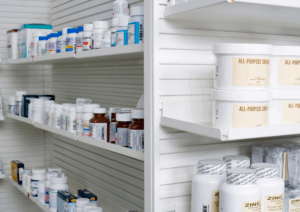Barcode technology must be placed at the forefront to enhance patient safety as the NHS moves towards embracing digital innovation. As it currently stands, only 30% of NHS trusts in England utilise barcode technology. This is set to change next March following the publication of the Government’s 2023 Mandate to NHS England.
The mandate requires that all trusts in England adopt barcode scanning of high-risk medical devices to ensure long-term sustainability. However, GS1 UK president Professor Sir Terence Stephenson has expressed that more needs to be done to truly enhance patient safety with barcode technology. This means ensuring that barcodes are used at every stage of the patient’s pathway during their stay in hospital. Following this process can reduce potentially critical errors during surgery.
Barcode Technology at Every Pathway to Ensure Patient Safety
In an interview with the Daily Telegraph, Sir Terence recommended that each patient receive a unique patient identifier that “actually emphasises their uniqueness”. This method ensures that patient information is standardized with a unique code.
The technology allows clinicians to view complete records of the patient’s medical history, ensuring that they receive the correct treatment or surgery when admitted to a trust. Data from unique patient identifiers can be captured with point-of-care scanning. This is encouraged by GS1 Standards which requires that each patient receives a barcoded identity band.
The patient is given the band when first admitted and the barcode is scanned at all points of care prior to any procedure being performed. This allows essential information like known allergies and the exact treatment the patient requires to be shared across all departments. Following the process also reduces time spent discharging and admitting patients from two and a half hours to 30 minutes. Sir Terence highlighted that this could reduce strain on the NHS saying:
“We found that the use of barcode scanners can reduce that from two and a half hours to 30 minutes: I was really struck by that. Getting people out quickly is good for patients, but it’s also very good for the NHS, particularly when there are winter pressures.”
Professor Sir Terence Stephenson via the Daily Telegraph
The Growing Need For Unique Patient Identifiers
The call for unique patient identifiers follows a lack of traceability of patients who were given faulty devices such as breast implants or replacement hips. More alarming is the warnings of surgeons operating on the wrong parts of patients’ bodies three times a week. It’s also been found that foreign objects are left in the body twice a week.
One such incident was recorded in a report from the Healthcare Safety Investigation Branch. The incident is referred to as ‘the reference event’ in the report and involved the use of vascular grafts for haemodialysis treatment. This involves a patient’s blood being filtered through a machine via a tube before it is passed back into the body. Vascular grafts are typically used to create a stronger opening between the artery and vein for the blood to travel through.
The reference event focused on a patient who received the wrong type of vascular graft for haemodialysis treatment, resulting in an additional procedure being carried out and an overnight stay in hospital. The incident was considered a serious breach in ensuring patient safety and was reported to the investigation branch.
The report from the branch found that barcode technology could prevent such errors and ensure patient safety. With point-of-care scanning of the unique patient identifier and proper tracking of the vascular grafts, the incident in the reference event could have been avoided entirely.
Addressing Threats to Patient Safety
The traceability of high-risk medical devices has been a consistent struggle for the NHS over the years. The Cumberlege Report, carried out by Baroness Julia Cumberlege, found that the use of pelvic mesh implants had caused severe chronic pain in the patients they were used to treat. A key factor in this risk to patient safety was the lack of data and information surrounding the devices.
After a tepid response to the report from Baroness Cumberlege, the government is finally taking steps in the right direction with their mandate to the NHS. However, as Sir Terence points out, more needs to be done to truly enhance patient safety. While the increased traceability of high-risk medical devices will undoubtedly benefit patients, there is still room for error.
To radically reduce threats to patient safety, all NHS must fully embrace barcode technology. That means ensuring that every patient has their own unique patient identifier that can be scanned at every stage of the pathway to reduce harm and to ensure that they are faced with the best possible outcomes.
KMsoft is a proud partner of GS1. Our approved solution, StockAssist Healthcare, offers a streamlined approach to managing inventory which improves efficiencies, productivity, and enhances patient safety.
Find out more about our solutions here, or get in touch to book a demo.




